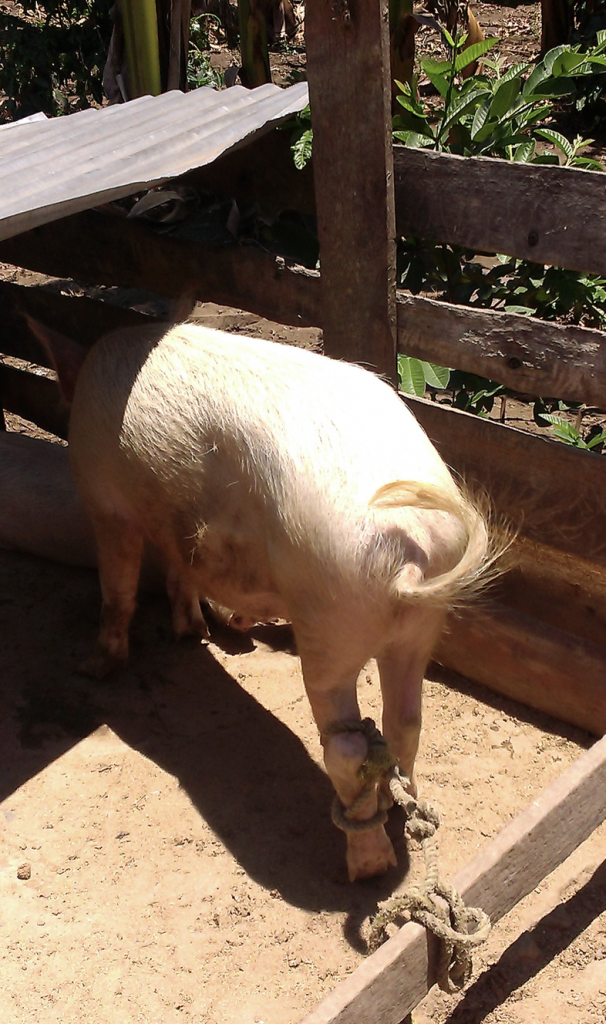Credits:Biovision-Infonet

Pigs are social animals, which forms bonds to each other. Bodily contact is important for them, and they prefer to lie close to each other. Pigs are communicative and have a wide range of sounds to communicate with. They do have a good memory, can distinguish between some colors and have a hearing roughly at the same level as humans. They are sensitive and intelligent animals have good learning abilities e.g. they can learn a lot of ‘tricks’, and they can link to humans and e.g. recognize their name. They can also form bonds to humans. They are able to find their way home from large distances. They are curious and explorative, and from nature, they are scavenging and searching for feed, rooting the soil to find roots, small animals like worms and insects, and all kinds of plant material. Their rooting behavior helps the soil to keep a good balance. They have a good sense of smell, which help them select food and identify ‘hidden food’ e.g. in the ground. They also have a good sense of taste. They are discriminative eaters, though, and explore to find what they want. In nature, they will forage up to 75% of their awake time, so they have a high activity level by nature. They can walk and trot over quite long distances, and they are good swimmers.
Even though they have been domesticated for many years, they often suffer because there is a mismatch between the environment in which they are housed, and their natural need for being active, explorative and searching for food. They are unable to sweat, so in hot weather they should be provided with opportunities to cool down, preferably a mud bath, which also protects them against the sun. They prefer cleanliness, and e.g. make ‘toilets’ if the space and surroundings allows. They will always prefer to sleep on clean spaces, as far away from their toilet as possible, and even quite newborn piglets can leave the nest to place urine and dung in another place.
Organic pig production and norms
The pig production has to – like all livestock production – be land-based. Landless livestock production is not acceptable, and the pigs should form an integral part of the crop rotation system on the farm,
- Conventional pigs have to be reared under organic standards for six months before they are considered organic (i.e. the first litter after the conversional period can be sold as organic). Simultaneous conversion f land and livestock is possible as long as most of the feed for the animals comes from the converting farm.
- The choice of breeds or strains should favor pigs that are well adapted to the local conditions and to the husbandry system intended. Vitality and disease are particularly mentioned, and preference should be given to indigenous breeds or crosses.
Conversion in an organic farm
- When an organic herd is constituted for the first time, conventionally reared piglets can be bought at weaning (at less than 25 kg) and reared as organic.
- An established breeding herd can bring in gilts from non-organic holdings to allow for natural growth in the herd to a maximum of 20% of the herd, if organically reared animals are not available. This number of bought-in breeding animals can be increased under special circumstances (major expansion, change of breed, new specialization developed).
- Boars can be brought in from non-organic holdings.
- Livestock brought in from non-organic holdings for breeding purposes cannot be sold as organic either for slaughter or for breeding.